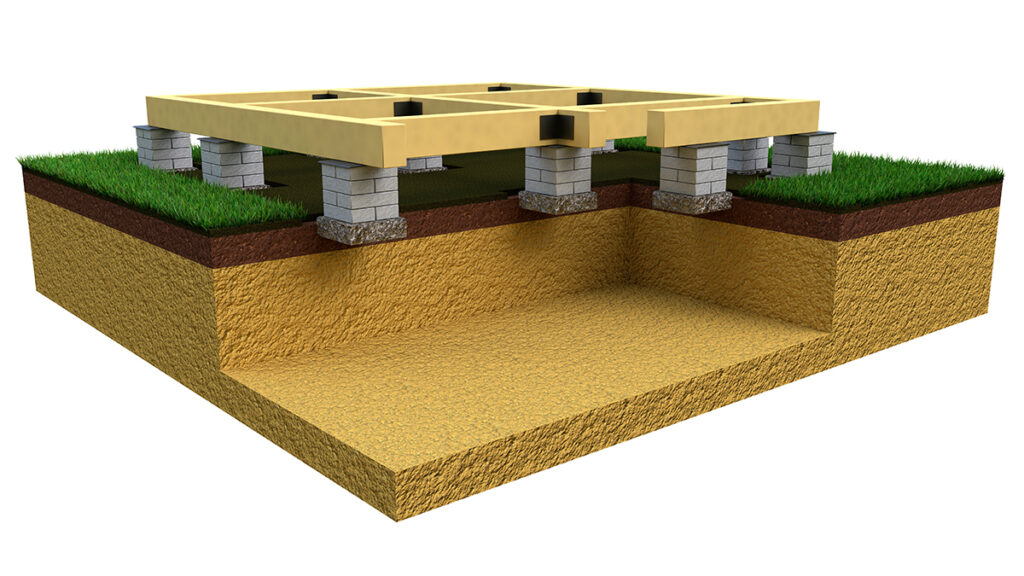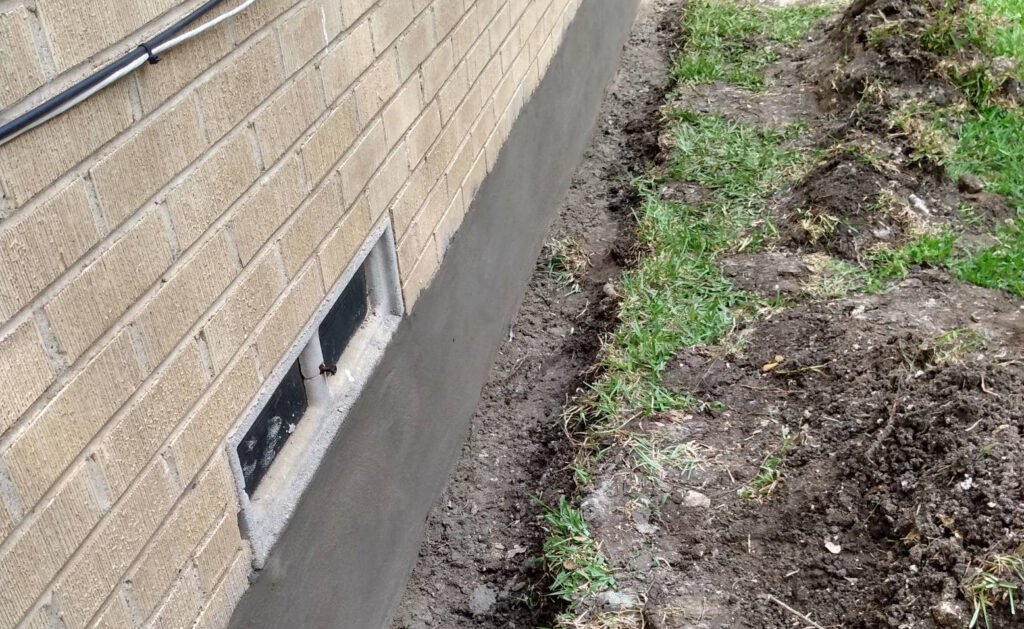Slab Foundation Repair Methods: Techniques for Structural Integrity
Slab foundations are a common type of foundation in many homes, providing a solid base made of a single layer of concrete. Over time, however, these foundations can develop issues due to soil movement, environmental conditions, and material aging. It’s important to address these problems promptly to maintain the structural integrity of the home. Slab foundation repair methods offer solutions to rectify such issues, ranging from simple crack sealing to more complex underpinning techniques.
Identifying foundation problems can be tricky, but certain signs can signal the need for repair. These include visible cracks in the concrete foundation itself, uneven flooring, and doors or windows that no longer open or close properly. Once these issues are spotted, a professional assessment is necessary to determine the extent of the damage and to choose the appropriate repair method. Some methods involve minimal disruption, like slab jacking to raise and level the foundation, while others, like piers and beam repair, require more extensive work.
Preventative measures are also crucial in maintaining your home’s foundation. Regular inspections can detect potential problems early on, and proper soil moisture levels must be maintained to prevent undue soil swelling or shrinkage, which can put stress on the foundation.
Key Takeaways
- We discuss the importance of timely repairs to maintain a home’s foundation.
- We outline how professional assessments determine the best slab foundation repair methods.
- We stress the role of prevention and maintenance in extending the life of concrete slab foundations.
Understanding Foundation Damage
Before we address the specific methodologies for repairing a slab foundation, we must grasp the root of the problem — foundation damage. This section explores the signs that indicate foundation issues and how varying soil conditions might contribute to such damage.
Identifying Foundation Problems
We need to recognize the signs of foundation damage early. Minor cracks in your foundation, while often not immediately indicative of structural issues, can escalate to larger, more concerning issues. These small cracks are frequent in new constructions due to settlement but should be monitored. However, when large cracks appear, or existing cracks widen or lengthen, these are unmistakable signs of foundation problems. Foundation cracks that are wider than 1/4 inch, especially if they display a zigzag pattern or run horizontally, signal serious foundation damage and necessitate prompt attention.
Effects of Soil Conditions on Foundation
The type of soil beneath our home significantly influences the integrity of the foundation. Soil conditions, especially expansive soils that swell when wet and shrink during dry conditions, can cause substantial movement. Expansive clay soils are particularly notorious for creating upheaval or settlement, which can lead to foundation damage. As the soil expands, it can exert pressure on the foundation walls, leading to bulging or cracking. Conversely, when soil dries, it contracts, potentially causing the foundation to sink or shift. Understanding the particular soil conditions where our property is located helps us anticipate potential foundation issues and select the most effective repair methods.
Professional Assessment
When we consider the integrity of a slab foundation, professional assessment is the cornerstone of ensuring its longevity and functionality. It’s crucial to engage the right experts who provide in-depth evaluations of the underlying issues and determine the most effective repair methods for your foundation.
Hiring a Foundation Repair Expert
To safeguard our home’s foundation, we must seek a foundation repair expert well-versed in common foundation repair methods. FCS Foundation and Concrete Services conducts thorough inspections tailored to the type of foundation at hand. Their expertise guides us in identifying signs of foundation concerns which may include:
- Cracks in the walls or flooring
- Structural damage
- Foundation settlement
- Sinking foundation
- Uneven floors
- Doors and windows that fail to function correctly
Upon detecting these indicators, a reputable foundation repair contractor executes a comprehensive investigation to advise on necessary repairs.
Engineering Insights from Structural Engineers
Collaboration with a qualified structural engineer provides us with critical engineering insights that delve into the intricacies of our foundation’s condition. These experts assess the structural soundness of our homes and offer detailed reports on the integrity of the slab foundation. Structural engineers can also recommend specific repair techniques, reinforcing the importance of precision in the foundation repair process. They focus on aspects such as:
- Soil characteristics and their impact on the foundation
- The severity of the foundation damage
- Potential long-term solutions to prevent recurring issues
In engaging these professionals, we ensure our foundation repair is approached with a strategic and methodical mindset, laying a robust groundwork for enduring stability.
Foundation Repair Techniques
Before we explore specific repair strategies, it’s key for us to understand that foundation repair techniques vary based on the underlying problem and the type of foundation in question. First and foremost, a thorough assessment should direct the choice of repair method. Whether it’s handling minor cracks or addressing significant foundation shifts, the right technique is paramount to ensure the longevity and stability of the building.
Pier and Beam Repair Methods
Pier and beam foundations offer unique repair options such as adjusting or replacing the piers or shimming the beams. When settling occurs, concrete piers, steel piers, or helical piers might be driven into the earth to provide additional support. If wood elements are damaged by moisture or pests, these can be replaced to restore integrity.
- Concrete Piers: Durable, affordable, and suited for each soil type.
- Steel Piers: Less invasive to install, providing a stable solution for deeper soil layers.
- Helical Piers: Ideal for lighter structures or when immediate load transfer is necessary.
Repairing With Slab Jacking
Slab jacking, or “mudjacking,” is a specialized procedure where a mixture, often a form of hydraulic cement, is pumped beneath the sunken slab to raise it back to its original position. The process typically requires drilling holes into the slab, through which the mixture is injected using concrete pumps.
- Materials: Usually a slurry of hydraulic cement, soil, water, and other components.
- Process: Small holes are drilled, and the mixture is pumped under the slab.
Hybrid Piling Systems
Hybrid piling systems combine the advantages of concrete pilings with steel pipes to attain depth and load-bearing capabilities that may not be possible with a single system. These systems use the robustness of concrete and the depth-reaching ability of steel to adapt to various soil conditions.
- Concrete Pilings: Used to reach a stable soil layer; can be reinforced with steel rebar.
- Steel Pipe: Driven deep into the ground to anchor the system securely.
Through these methods, we can address diverse issues ranging from minor to extensive foundation damage. By carefully selecting and executing the most effective foundation repair methods, we can restore the structural integrity of a slab foundation with confidence and precision.
Prevention and Maintenance
Proactive strategies are vital for ensuring the longevity of your home’s foundation. By addressing potential problems early and maintaining a routine, we can prevent many common issues that lead to foundation damage.
Avoiding Further Foundation Issues
To safeguard against further foundation problems, it’s crucial to consider the following:
- Identify and Address Leaky Plumbing: Regularly inspect plumbing systems to ensure there are no leaks. Water from leaks can seep into the foundation, causing significant problems over time.
- Control Tree Root Growth: Be mindful of tree planting locations. Tree roots can extend far beneath the unstable soil and push against the foundation, leading to cracks. It’s wise to remove any roots encroaching on the foundation and to consult an arborist if necessary.
Regular Maintenance and Monitoring
Our routine should include these consistent practices:
- Inspection Schedule: Conduct semi-annual foundation inspections of the foundation to catch signs of distress early, such as cracks or uneven flooring.
- Proper Drainage: Ensure that your home’s drainage is moving water away from the foundation effectively. A gradient of at least 6 inches within 10 feet from the foundation perimeter can be a Long-Term Solution to prevent water-related issues.
By adhering to these prevention and maintenance guidelines, we can help maintain the structural integrity of your foundation and avoid costly repairs. Remember, a little attention goes a long way in preserving the value and safety of your home.
Frequently Asked Questions
How do I know which foundation repair method is suitable for my concrete slab?
It is best to consult a foundation expert who can assess the specific issues with your slab foundation and recommend the most appropriate repair method based on the extent of damage, soil conditions, and other relevant factors.
Can I use DIY methods for slab foundation repair?
While minor cracks and surface issues can be addressed with DIY products, it is recommended to consult a professional for any significant foundation repairs to ensure a long-lasting and effective solution.
Are there permanent solutions for concrete slab foundation repair?
Yes, certain foundation repair methods, such as steel pier installation or helical pier installation, offer long-term and often permanent solutions for concrete slab foundation issues, providing structural integrity and stability.
What are the most common types of foundations that may require slab foundation repair?
Common types of foundations that may require slab foundation repair include concrete slab foundations, beam foundations, and pier and beam foundations, among others.
What are the potential risks of delaying slab foundation repair?
Delaying slab foundation repair can lead to further structural damage, increased repair costs, compromised safety, and reduced property value. It is advisable to address foundation issues promptly to prevent extensive damage.







